A LOOK INTO MANAGERIAL FUNDAMENTALS SOLIDLY BASED IN ACADEMIC RESEARCH
Pricing
Pricing is the single most important driver of profitability. Excellence in pricing is what distinguishes great companies from merely good companies. Mediocrity in pricing equals mediocre profitability even for companies with great products. Not many executives understand the power of pricing – fewer still are able to implement pricing well. What does it take for pricing to become a powerful driver for sustained profitability?
Attention to details – small changes in price lead to large changes in profitability
Small changes in net selling prices lead to far bigger improvements in profitability than similar changes in revenues or cost reductions. Pricing is a very powerful tool – it can increase or destroy profitability far more than any other operational lever.
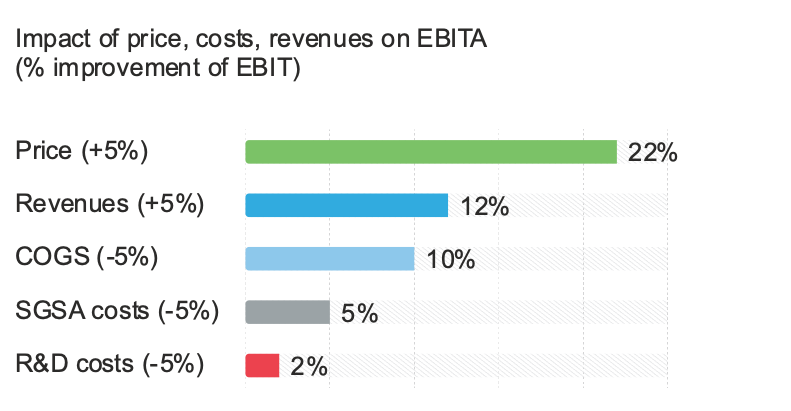
For a company with a 10% operating profit margin, a 2% improvement in net selling prices improves EBIT by a whopping 20%. Executives thus have to learn how to handle pricing so that pricing becomes a creator, not a destroyer, of value. Managers at all levels – from CEOs to front-line managers – are thus well-advised to take pricing and small variations in net selling prices seriously. In pricing details matter. An obsession with details is a distinct advantage.
A pricing function in charge of improving performance and capabilities
In its biannual survey of Chief Marketing Officers (CMOs) the American Marketing Association – the preeminent marketing association on this planet – polls marketers on their sphere of influence. The most striking result: marketing, typically, does not lead pricing. In most companies, marketing is responsible for branding, digital activities and advertising – but not pricing. This is striking.
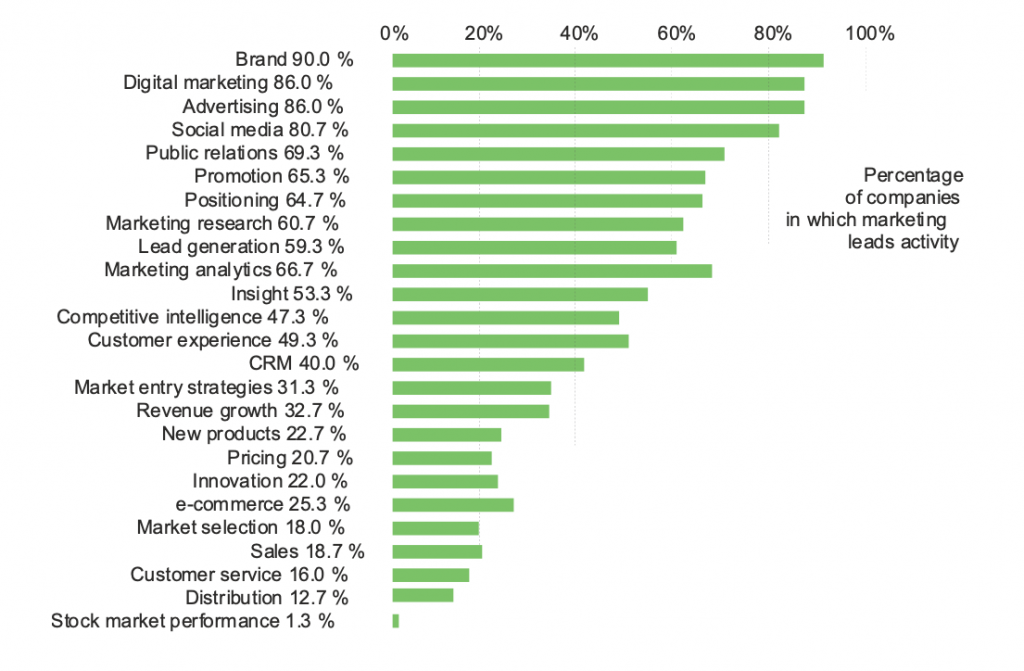
If marketing is not responsible for pricing, who then is? The answer is simple. Everybody is responsible for pricing: marketing (list price definition), sales (discounting), finance (margin guidance), supply chain (shipment term decisions), customer service (provision of free supplementary services) or even the CEO (occasional inspiration from above). This means, of course, that nobody is. In most companies there is nobody – not a function, not a dedicated organizational unit – responsible for defining list prices, developing companywide pricing capabilities, defining pricing and discounting policies, enforcing discounting discipline, or quantifying and documenting value to customers. Pricing typically falls between the cracks. Pricing is not managed. If pricing is not managed as a strategic activity, profitability erodes as a consequence of weak price setting and price getting.
Improvements in price setting and price getting capabilities
In our article in the MIT Sloan Management Review, “Is It Time to Rethink Your Pricing Strategy?” Stephan Liozu and Andreas Hinterhuber distinguish between “price setting” and “price getting”. These two dimensions define the pricing capability grid®, a registered trademark of Hinterhuber & Partners.
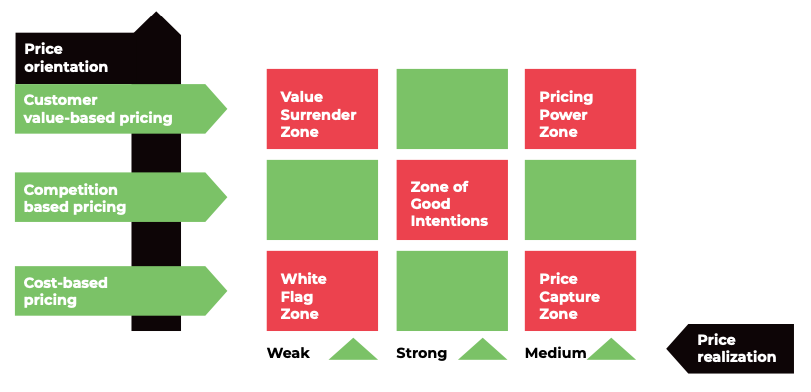
Price setting refers to the different approaches companies use to determine selling prices: cost-based pricing, competition-based pricing, and customer value-based pricing. Most companies are not very good at price setting – in fact today, pricing is still largely cost- or competition-based. The table below summarizes the prevalence of different price setting approaches across industries. Excellence in price setting means, quite simply, value-based pricing.
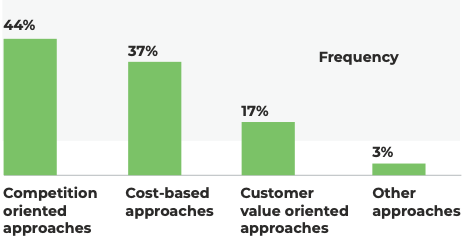
In a series of studies with over 1800 respondents Stephan Liozu and Andreas Hinterhuber document that value-based pricing is positively and competition-based pricing negatively related to company performance.
Price getting refers to different abilities to actually get the price set out in the first place: some companies are very good at realizing their list prices, via value communication, customer value quantification, price controlling, enforcement of discounting discipline and pricing policies for supplementary services. Other companies are less effective, and prices erode as a result of poor negotiation, poor value communication, or weak price-realization capabilities.
Pricing power is the result of excellence in price setting – value-based pricing – and excellence in price getting – enforcing pricing discipline and value quantification. The pricing capability grid® is the tool that allows to measure and improve capabilities on these two dimensions over time. Improvements in price setting and in price getting capabilities directly improve company performance.
The CEO as pricing champion
In many companies, pricing is a clerical task, buried in the lower levels of the organization. Managers with a technical background, sales administrators or controllers set and manage prices. Executives mistakenly assume to be responsible only for the big picture, letting the small things take care of themselves. Executives thus assume that pricing is part of these small things. This is bad practice.
In the context of a research project involving respondents from countries across the globe, Stephan Liozu and Andreas Hinterhuber poll 358 CEOs and business owners and find that CEO championing of pricing leads to both increased pricing capabilities and improved company performance.

In the best-managed companies, CEOs are interested to the point of being obsessed with pricing. CEOs can play a very important role by acting as champions of pricing and the pricing function. CEOs can and should champion pricing by developing company-wide pricing capabilities, by establishing and promoting the pricing function, by defining pricing and discounting targets, by showing a personal and passionate interest in customer value creation and pricing, and by ensuring that executives across functions and levels live and breathe pricing. It is really quite simple: The higher CEO championing of pricing, the higher the performance of the company. Obsession with pricing is a good thing. Even better: Obsession with value.
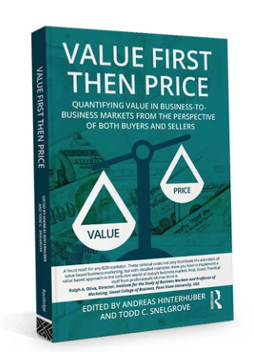
“Value first, then price” is our guiding principle, the title of our book and our most important advice. First quantify value, then set price. First ensure that customers comprehend value, then discuss price. Value first, then price.
Managers in B2B and B2C must ensure that the price difference vis-à-vis the competition is lower than the value difference. This is the principle.
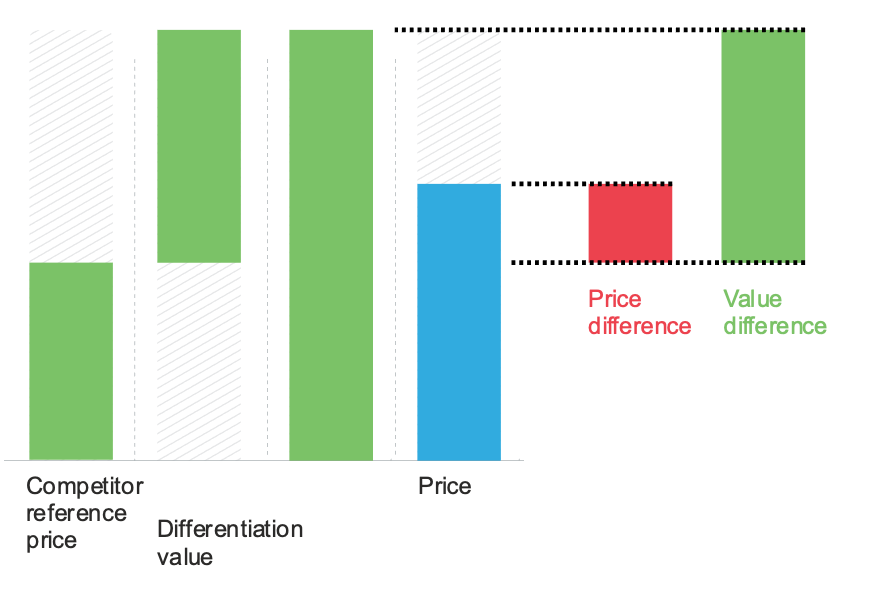
To do this, managers must know how to quantify value. Our tool, the value quantification tool® of Hinterhuber & Partners, is designed to do just this. The tool has produced over 900 million € in quantified customer value for customers of Hinterhuber & Partner clients in the automotive industry, pharma, B2B services, steel, medical devices, chemicals, banking, IT, transportation and other industries. Over the years we have tested, improved, refined and updated the tool and our clients now tell us that this is simply the best tool they have ever seen – instrumental to increasing prices and win rates.
Value quantification is what the best-managed companies do – before discussing price. Value quantification is what enables SKF, the 7 billion € industrial bearings manufacturer, to achieve industry leading profitability and growth. Value quantification capabilities enable SKF sales and marketing managers to achieve a price premium of 50% over the best available alternative and document that the customer is better off by purchasing from SKF than from a competitor. SKF documents that the price premium is less than – about 15% of – customer quantified value.
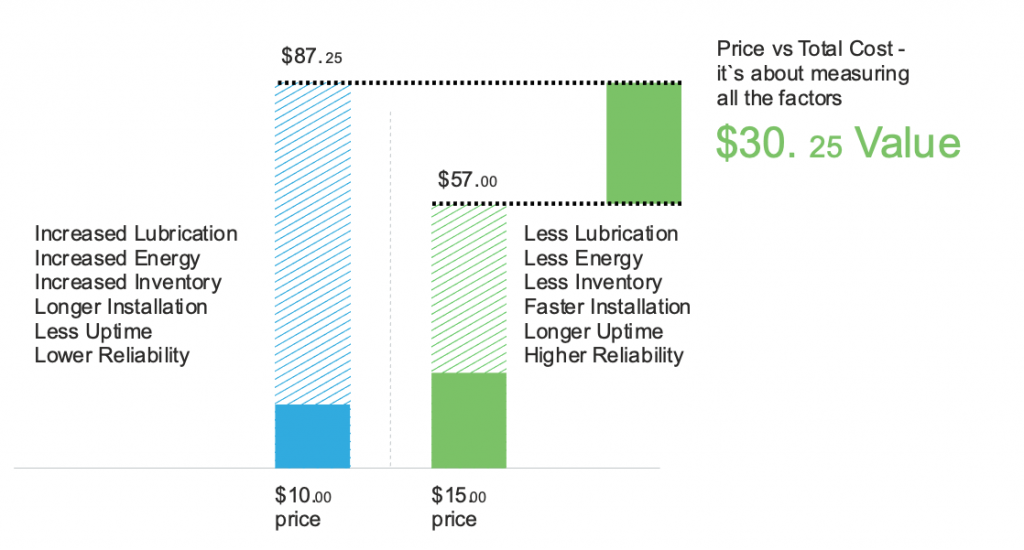
More in general: Our research has shown that value quantification capabilities are positively associated with company performance. Hinterhuber (2017): “The value quantification capability refers to the ability to translate a firm’s competitive advantages into quantified, monetary customer benefits. The value quantification capability requires that the sales manager translates both quantitative customer benefits—revenue/gross margin increases, cost reductions, risk reductions, and capital expense savings—and qualitative customer benefits—such as ease of doing business, customer relationships, industry experience, brand value, emotional benefits or other process benefits—into one monetary value equating total customer benefits received”.
The higher sales and account manager capabilities to quantify and document value, the higher the company performance. Key: the ability to translate both quantitative benefits (total cost of ownership advantages) as well as qualitative benefits (reputation, ease of doing business, brand equity) into one monetary economic value representing total customer benefits. This is what the Hinterhuber & Partners value quantification tool® does better than any other tool on this planet.
Practice innovation in pricing
Innovation is frequently seen as product or business model innovation. Innovation in pricing brings new approaches to pricing strategies, to pricing tactics, and to the organization of pricing with the objective of increasing customer satisfaction and company profits conjointly. Pricing is not a win/lose proposition between companies and customers. Innovation in pricing breaks the deadlock and allows to increase profits and customer satisfaction conjointly. The following table provides examples.
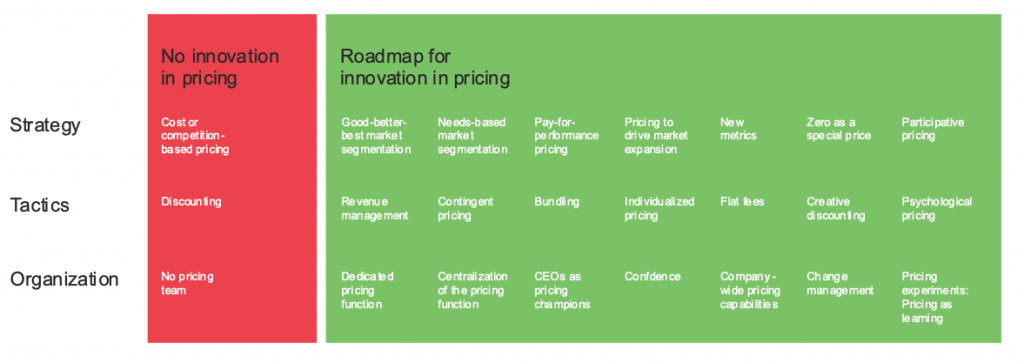
Understand violations of rationality to favorably influence perceptions of value and price
Our perceptions of value and price are subject to bias. Look at the figure below. We all know, after deliberative reasoning, that the two green circles are of equal size, and yet, instinctively, it seems that one circle is larger.

An understanding of violations of rational choice principles in B2B and B2C allows managers to favorably influence perceptions of value and price without lowering price.
The following table provides an overview of some prevalent violations of rational choice principles. An understanding of these principles allows managers to assess which of these principles to exploit in product pricing decisions.
In a nutshell
- pricing is the most impactful operational lever: incremental improvements produce extraordinary results.
- a pricing function – a Chief Pricing Officer, for example – is necessary to produce sustained improvements in performance and capabilities.
- pricing excellence has two dimensions: price setting and price getting. Improvements in price setting and price getting capabilities strongly improve performance.
- the CEO should be the pricing champion. CEO championing of pricing improves performance.
- value first then price: quantify value first, then set prices.
- practice innovation in pricing: this allows to improve customer satisfaction and profits conjointly.
- frame value and price intelligently. An understanding of violations of rational choice principles allows to favorably influence perceptions of value and price without actually lowering prices.




